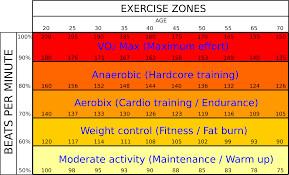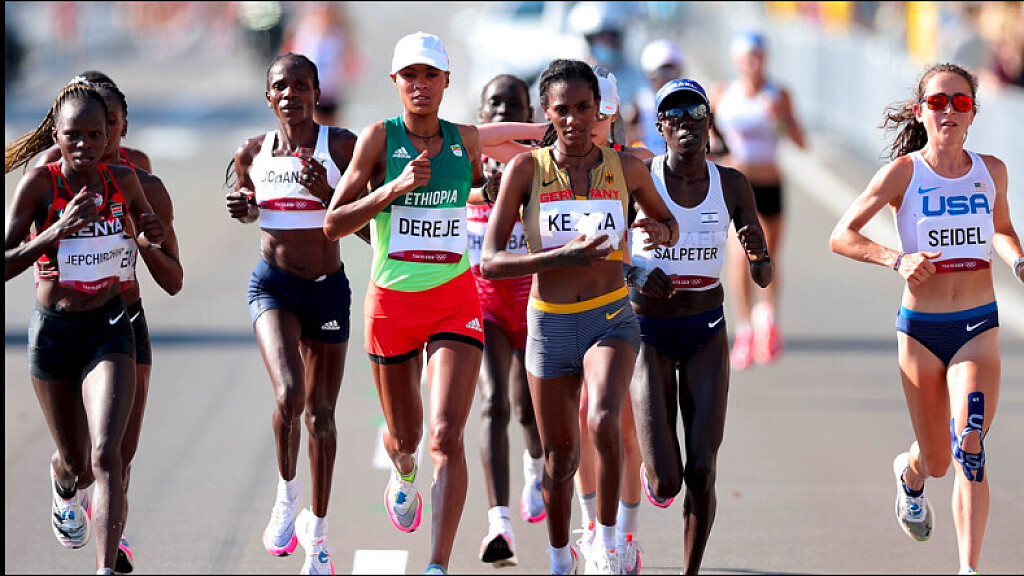Running News Daily
Running News Daily is edited by Bob Anderson in Los Altos California USA and team in Thika Kenya, La Piedad Mexico, Bend Oregon, Chandler Arizona and Monforte da Beira Portugal. Send your news items to bob@mybestruns.com Advertising opportunities available. Train the Kenyan Way at KATA Kenya. (Kenyan Athletics Training Academy) in Thika Kenya. KATA Portugal at Anderson Manor Retreat in central portugal. Learn more about Bob Anderson, MBR publisher and KATA director/owner, take a look at A Long Run the movie covering Bob's 50 race challenge.
Index to Daily Posts · Sign Up For Updates · Run The World Feed
VO2 Max Just Turned 100. Here’s What It Means.
Over the past century, “maximal oxygen uptake” has turned out to be a valuable marker of both endurance and health.No tidbit of physiological jargon has achieved more popular renown than VO2 max, also known as maximal oxygen uptake. And, for the past century, none has been so consistently misunderstood. A new commentary in the International Journal of Sports Physiology and Performance, led by Grégoire Millet of the University of Lausanne, marks the 100th anniversary of the landmark paper by A. V. Hill and Hartley Lupton that first described VO2 max. It’s a big milestone, and it offers a good excuse to take a closer look at what VO2 max really means and why it (sometimes) matters.
A.V. Hill was a 4:45 miler and already had a Nobel Prize for work in muscle physiology when he and Lupton began studying VO2 max. The experiments involved subjects running around Hill’s back garden in Manchester with air bags strapped to their back to measure how much oxygen they used. The faster they ran, the more oxygen they needed—but only up to a certain point. Eventually, oxygen consumption plateaued, even as they continued to accelerate.

Beyond this plateau—what’s now known as VO2 max, indicating the maximum volume per unit time of oxygen (O2)—they had to rely on anaerobic energy pathways, going into what Hill called “oxygen debt.” This debt couldn’t be sustained for long thanks to rising lactic acid, which meant that VO2 max effectively marked the limits of sustainable effort. In other words, VO2 max was an objective measure of endurance.
The current understanding of exercise metabolism has evolved in a few respects since Hill’s time. Physiologists no longer talk about oxygen debt, and lactate (not lactic acid) is considered a marker of fatigue but not its direct cause. But the basic idea remains the same: there’s a limit to the rate at which your body can take in and use oxygen, and having a higher limit augurs well for both performance and health.
The initial understanding of VO2 max was that it was a measure of cardiovascular function, limited primarily by how rapidly your heart could pump oxygen-rich blood to your muscles. For elite endurance athletes, that’s still a pretty good approximation: aerobic monsters are distinguished primarily by a large and compliant heart that can pump huge volumes of blood with each stroke.
But over time, researchers realized that the limits of oxygen uptake are best thought of as a cascade with numerous steps. You have to inhale oxygen into your lungs, diffuse it into your bloodstream, pump it to your muscles, diffuse it into your muscles, and then your mitochondria have to use it to generate ATP. Each of those steps can become a limiting bottleneck in certain conditions, so there isn’t one single path to altering VO2 max.
There are two ways of quantifying your VO2 max. The absolute value is expressed in liters of oxygen per minute: a well-trained endurance athlete, for example, might be able to consume 5 L/min of oxygen. The relative value, which is the more commonly discussed number, is simply the absolute value divided by your weight in kilograms. If that same endurance athlete weighed 70 kilograms, their relative VO2 max would be 71 ml/min/kg.
The standard method of measuring VO2 max, originally developed as an offshoot of the infamous Minnesota Starvation Study during World War II, is a treadmill test (or the equivalent with some other form of exercise like a stationary bike), lasting six to 12 minutes and getting progressively harder in stages until you max out. But what does it mean to max out? There are various criteria: oxygen consumption reaching a plateau, heart rate reaching a plateau, lactate levels exceeding 8.0 mmol/L, perceived exertion greater than 17 on a scale of 6 to 20, respiratory exchange ratio (a comparison of much carbon dioxide you exhale compared to how much oxygen you’re consuming) of greater than 1.1.
The reason for all these criteria is that the idealized picture of a steady increase in oxygen consumption followed by a plateau often doesn’t show up in real life. And even when it does, it’s not an invariant number: your VO2 max when kayaking will be smaller than when you’re running, for example, because you’re using smaller muscles that can’t gobble up as much oxygen. (That’s why rowers tend to have some of the highest absolute VO2 max values, because they’re huge and they’re using both arm and leg muscles. Cross-country skiers have some of the highest relative values, because they’re also using arms and legs but are generally much lighter than rowers.)
There are even a few studies that have found different VO2 max values depending on the details of the treadmill protocol. How can it be the ultimate objective measure of endurance if its value depends on how you test it? Is the apparent plateau just your brain deciding that you’ve had enough and should step off the treadmill? These and other controversies persist. My take: the VO2 max plateau is real and dictated by physiology, but it’s not as clear-cut a threshold as once thought.
If you tested all the runners on the start line of an Olympic distance race, their VO2 max values wouldn’t tell you much about how they’d place. They all have high values, and the race won’t necessarily be won by the runner with the highest value. Eliud Kipchoge, for example, reportedly has a relatively unexceptional value for an elite marathoner. In that sense, VO2 max isn’t a great predictor of running performance. And the cyclist with the highest ever reported VO2 max, Oskar Svendsen, didn’t end up setting the world alight, as I recounted a few years ago.
On the other hand, if I had to predict the race finishing order of 100 people randomly picked from the street, and I was allowed one physiological test, I’d opt for VO2 max. In that diverse population, VO2 max values would be all over the map, and those with the highest values would likely finish at or near the front. So in that sense, VO2 max is a great predictor. To put it another way, a high VO2 max is a necessary but not sufficient condition for endurance success. It’s your ticket into the game.
You could argue that VO2 max has greater value as a predictor of health and longevity than of athletic success. While the relationship between exercise habits and longevity remains a little hazy, with some people arguing that too much is bad for you, the link between VO2 max and longevity is unambiguous: higher is better. In fact, the American Heart Association has argued the VO2 max should be considered a “vital sign” and be regularly measured or estimated by doctors.
Back in the 1990s, the Heritage Family Study trained about 500 people from 100 different families for 20 weeks. On average, they were able to boost their VO2 max by about 20 percent. But they saw a wide range in responses: some people saw more than twice as big an increase, while others basically didn’t increase at all. And that variation seemed to cluster within families. The researchers estimated that about half the VO2 max training response was dictated by genetics.
The idea that some people don’t improve their VO2 max at all even with regular training remains controversial. A few different studies have taken aim at this idea, and shown that if you take non-responders from a study and have them either train more or train harder, everyone will eventually respond. Still, it’s clear that some people can increase their VO2 max more easily than others.
Trained athletes eventually hit a point of diminishing returns, although long-term structural adaptations like the size of your heart and the density of capillaries distributing blood can continue to improve. A meta-analysis a decade ago found that interval training can produce substantial improvements, with the biggest bang from intervals lasting three to five minutes per rep. The highest recorded values tend to be around 90 ml/kg/min in men and 80 ml/kg/min in women, with the sex differences attributable to higher body fat and lower hemoglobin levels in women.
As important as increasing your VO2 max is, the bigger challenge for many of us is slowing its decline. After age 25, it typically drops about ten percent a decade. According to a recent analysis, athletes who keep training can slow that decline to about 5 percent a decade, but those who fall off the wagon might see even steeper declines.
Overall, Millet and his colleagues conclude that VO2 max is “a healthy and active centenarian” that remains important in both endurance sports and as a measure of cardiovascular health. It’s not the ultimate barometer of fitness, but neither is it a meaningless detail. If you get a chance to have yours tested, for example by volunteering for a study at a local university, I highly recommend it. It can be fun to learn about your own physiology—and, during the final stage of the test where you keep pushing until you’re on the verge of being thrown off the back of the treadmill, your psychology.
(12/09/2023) Views: 1,230 ⚡AMPby Outside Online




